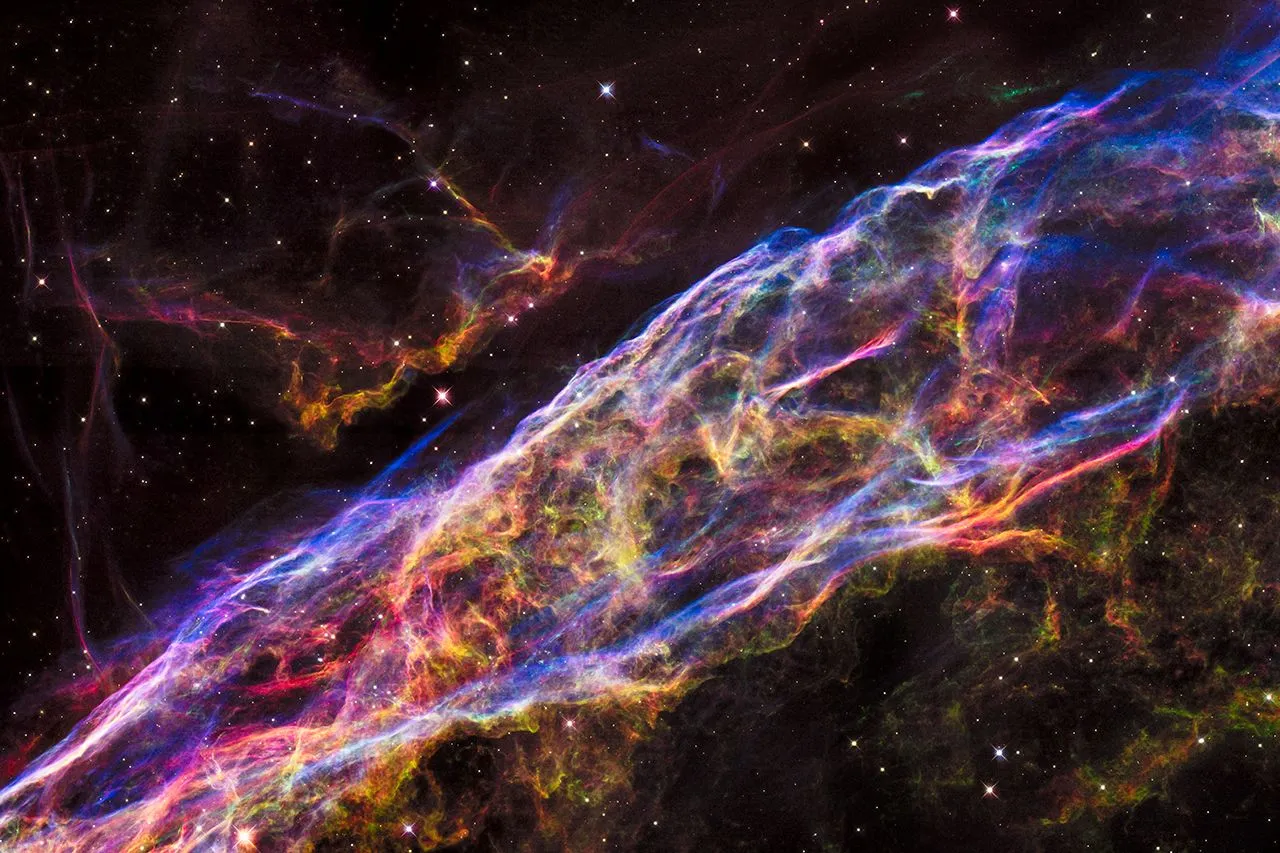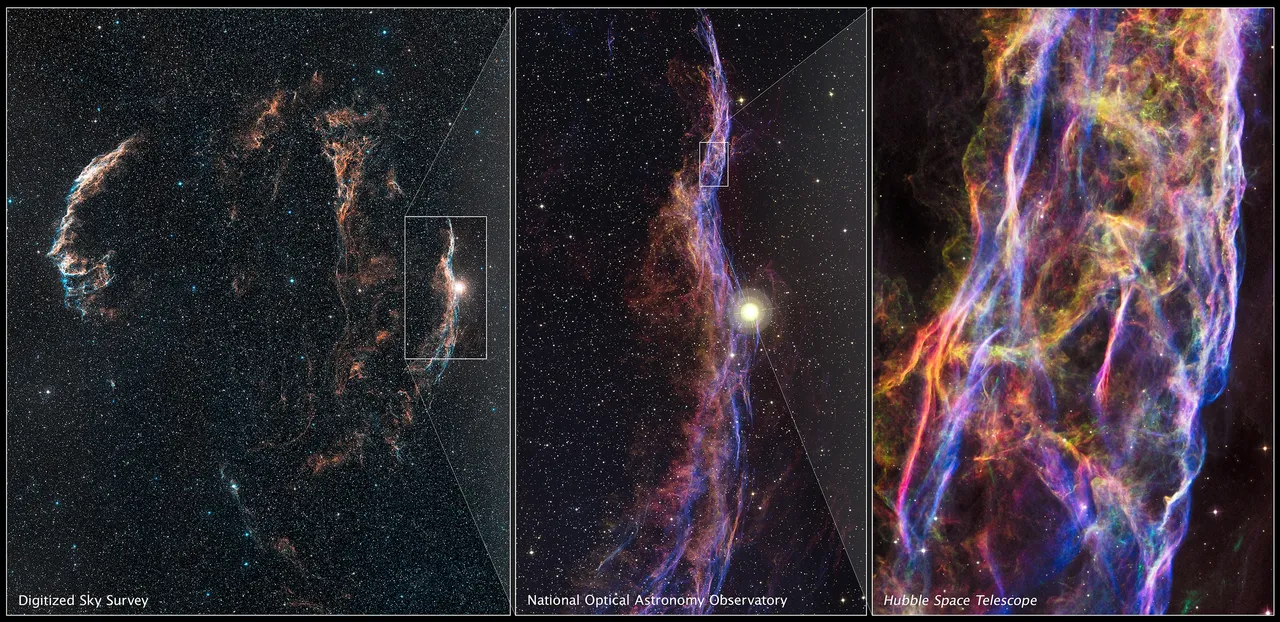
image source, photo in high resolution 6000x4000
In this picture you can see the consequences of the explosion of a supernova that occurred about 5.000 to 8.000 years ago at a distance of 1,470 light years from the Earth, and today is called Veil Nebula.
Different colors on the original picture correspond to different chemical substances which emit light waves of different lengths. Red - hydrogen, green - sulfur, blue - oxygen.

Therefore, the nebula is a non-uniform cloud, and is divided into five constituent parts. The total length of the entire nebula is 100-110 light years.
To be precise, the first image shows just a small section of the Western nebula NGC 6960.

[Left] – This is a sky survey image of the Veil Nebula, a 110-light-year-wide expanding remnant of a star that exploded about 8,000 years ago in the constellation Cygnus. [Center] – This is a ground-based telescope image of a 15-light-year-long stretch of the eastern portion of the nebula. [Right] – This image shows a two-light-year-wide segment of the remnant as photographed by NASA’s Hubble Space Telescope. Hubble resolves tangled rope-like filaments of glowing gases. source
Despite its small size (by the standards of outer space), Veil Nebula takes a lot of space on the visible sky, due to the fact that is quite close to our planet. If you add a bit of brightness, so that we could observe it with the naked eye, the nebula would look in our sky is 6 times larger than the Moon.
***
Hundreds of scientific discoveries occur around the world every day. But they may contain insufficient data to create a full-fledged article or seem rather boring for usual readers, because of the strong scientific specifics. Although, I see that steemit community loves science in all its manifestations.

#Sciencepop - science popularization. I suggest you use this tag in order to share interesting news, photos, stories from the world of science in a short format. Perhaps, in time, in this way, we will be able to create a powerful news and encyclopedic database. And use the links not to the external resources, but to sources inside the Steemit platform. This will significantly improve the indexation of the site and improve its position in search results.
Let's spend time here with benefits not only for ourselves, but also for the entire platform!
